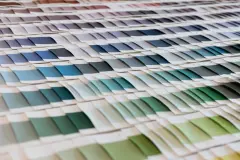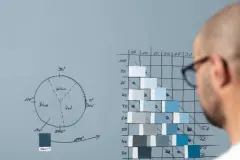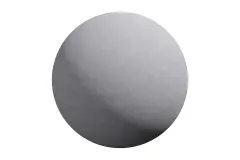Sto Colour Selection Tools
The new StoColor System 2022
1,400 new colour shades – endless possibilities, photorealistic tools
The new coordinate-based StoColor System delivers a whole host of composition options for architectural and interior design situations. Based on a colour wheel with 72 colour areas, 24 natural white nuances as well as 6 black tones, a series of 48 graduations of greys are at your disposal. To help you select the suitable colour, we offer a range of colour fans, colour cards as well as boxes and downloadable files for use with most illustration tools such as adobe photoshop and SketchUp. The professional colour tools available indicate, via the LRV – the light reflectance value and the TSC- the Total Solar Reflectance the suitability of certain Sto materials in regard to specific situations and use.

The Lightness (or brightness) value (LRV) is the amount of white or black mixed in with the color. It's also calculated as a percentage value between 0% and 100%. 0% lightness will also always be black.
The TSR-value describes the solar reflection capability of a pigmented surface. It represents the percentage of solar radiant energy that is reflected. The larger the value the more the solar radiation is reflected and therefore the lower the temperature increase of the surface compared to the surrounding temperature. The targeted use of pigments with a low absorption in the near infrared radiation range allows for very dark colour tones to be chosen which reduce the surface temperature. Specifically thermally insulated surfaces can benefit from this technique in terms of longevity.
Sto Color 2022 Ebook overview

The Architectural Colour Range
A selection of the most popular colours.
Downloads Architectural Colour Range
Exact digital façade textures : Realistic computer generated façade rendering.
Photorealistic computer graphics are now ubiquitous. At Sto also offer a physically-based approaches to rendering where an accurate modelling of the physics of light scattering is at the heart of image synthesis. With our data based files the user can offer visual realism as well as predictability of appearance.
Physically Based Rendering, the scanning of actual Sto surfaces, is more than mere simulation- this concept combines human-readable documentation and source code into a single reference that is specifically designed to aid comprehension. The files provided allow you to design and employ a full-featured rendering system capable of creating stunning imagery.
Why use physically based rendering?
Physically based rendering (PBR) is the concept of using realistic shading/lighting models along with measured surface values to precisely represent real-world materials- in this case Sto façade plasters and surfaces - to accurately create authentic 3D models. The files are available in 8k resolution. Due to the size please contact us at StoWerkstatt for a link to the download.

